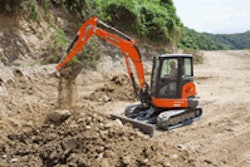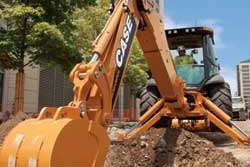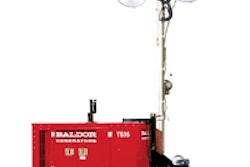The Mine Safety and Health Administration (MSHA) has announced new screening criteria for the pattern of violations enforcement program, which gives the agency additional enforcement tools to use at mines with a history of violating safety standards.
This is a critical first step in reforming the current pattern of violations enforcement program, MSHA says. The agency announced plans to draft new regulations governing the program in the spring, and the new criteria follow calls by Congress and the Department of Labor’s Office of Inspector General to fix serious flaws in the current system.
MSHA will implement new screening criteria and a new review process for determining whether a mine has exhibited a potential pattern of violations for its 2010 review of mine safety records.
“Since the passage of the Mine Act more than 30 years ago, not one mining operation has ever been placed on a pattern of violations,” said Joseph A. Main, assistant secretary of labor for mine safety and health, in a prepared written statement. “We have known for some time that the current system is broken and needs to be fixed. This new screening process improves upon the old one, which cast too broad a net and did not distinguish mines with the highest levels of elevated enforcement. This new system will let MSHA focus its attention on those mines that are putting miners at greatest risk.”
“MSHA’s changes to the POV program cannot fix shortcomings that require legislation or changes to the existing regulations,” Main added. “This is a stop-gap measure until reform can occur. We are aggressively pursuing both regulatory and legislative reforms, but in the mean time this new policy improves our ability to identify problem mines. Our goal with each of these reform efforts is to identify mines with a pattern of dangerous conditions and encourage them to improve their safety records. If a mine fails to do so, it will be placed into POV status.”
Section 104(e) of the federal Mine Safety and Health Act of 1977 (Mine Act) provides that mine operators with a pattern of significant and substantial violations be subject to closure orders for areas of the mine affected by those violations until the mine receives a clean inspection. Under current regulations, MSHA uses a screening process to determine whether a mine has a potential pattern of violations. A mine operator found to have a potential pattern of violations is given a period of time to reduce violations before MSHA uses its authority under 104(e) to issue closure orders.
According to the legislative history of the Mine Act, POV provisions are intended for use “at mines with a record of repeated [significant and substantial] violations and where the other enforcement provisions of the statute have not been effective in bringing the mine into compliance with federal
health and safety standards.” The preamble to the existing final rule states that “MSHA expects to reserve the use of the 104(e) sanctions for mines where the operator has not responded to an escalating series of enforcement actions by the Agency.”
“MSHA’s changes to the screening process are designed to meet these statutory and regulatory objectives,” said Main. “The new screening criteria will draw more attention to the so-called ‘bad actors’ than did the old criteria. They will focus on mines that exhibit chronic failures to maintain safe working conditions, have repeated significant and substantial violations, and have not responded to other enforcement tools.”
The new screening process is designed to identify mines that have been subject to closure orders, including closure orders for serious issues such as failing to correct violations after MSHA cites them, unwarrantable failures to comply with health or safety standards, failure to provide miners with required training and imminent dangers in the mine. The criteria will better identify mines where these tools have been used but have not been sufficient to improve compliance. The criteria also will consider whether a mine has high numbers of significant and substantial or S&S, violations involving elevated negligence, as well as a mine’s injury severity rate, targeting operations with an above-average injury severity measure. All of these factors are either new to the screening criteria or given greater emphasis than before.
The quantitative criteria use the most recent available 12 months of health and safety data to screen for mines. The screening criteria address two categories of violators. In the first category, a mine must exhibit high numbers of S&S violations (at least 50); have S&S violations either issued at an elevated rate (eight per 100 inspection hours) or at elevated levels (25 percent or more) of negligence; have a high rate of elevated enforcement actions (.5 per 100 inspection hours) (In almost all cases these must be closure orders for serious problems.); and have an elevated record of severe injuries (above the industry rate).
The second category targets mines that do not meet the above criteria but still have high numbers of S&S violations and elevated enforcement actions – at least 100 S&S citations/orders and at least 40 elevated citations/orders.
In addition, as required under current regulations, the screening requires mines in both categories to have either repeated S&S violations of the same standard (at least five) or repeated S&S violations caused by an unwarrantable failure to comply with the law (at least two).












